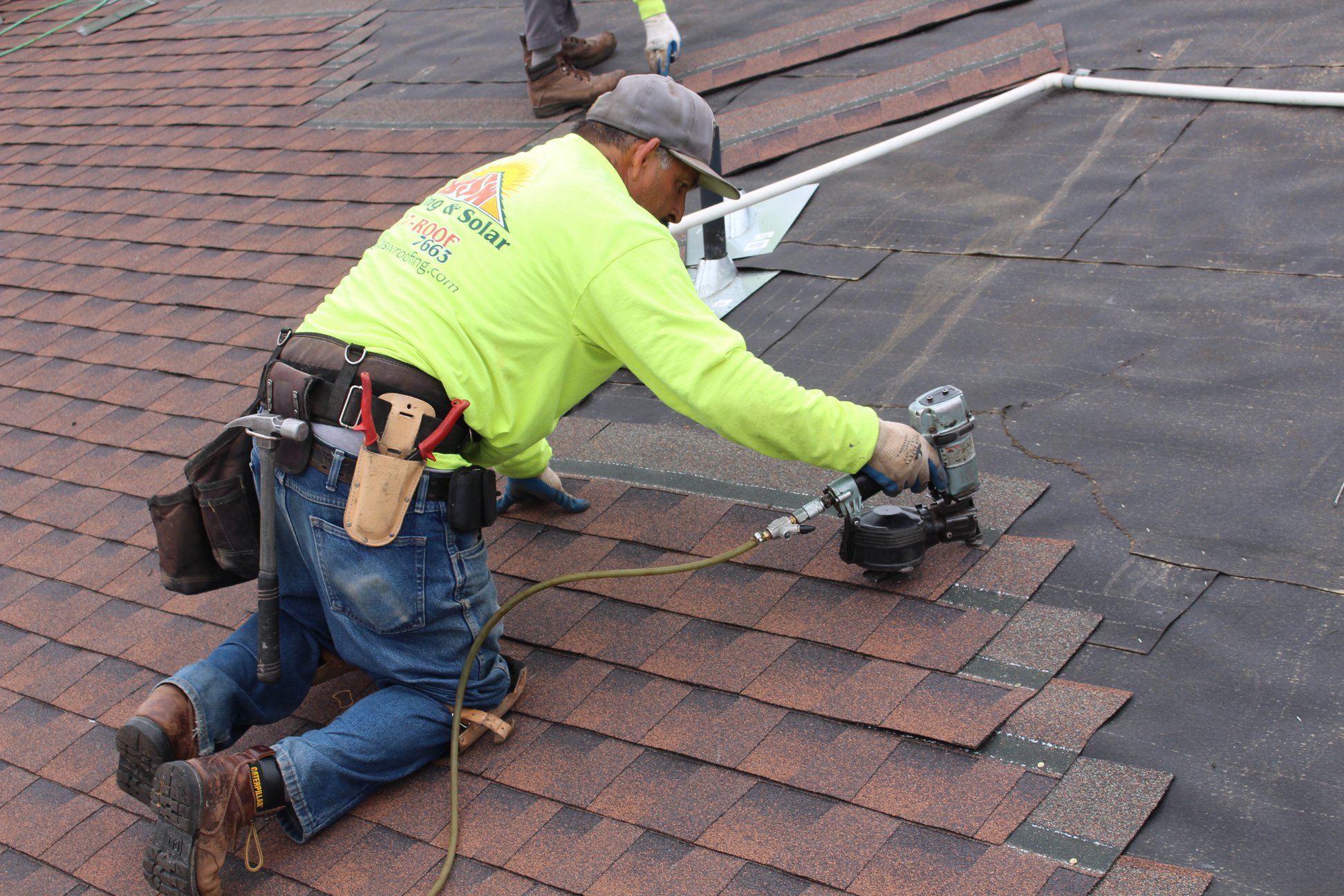Local Insights on Roofing Companies Gainesville Florida Homeowners Prefer
Local Insights on Roofing Companies Gainesville Florida Homeowners Prefer
Blog Article
Best Practices for Ensuring Correct Roof Covering Air Flow
Making certain appropriate roof air flow is crucial for the long life and efficiency of a roof system. A well balanced intake and exhaust air vent proportion, typically 1:300, plays a pivotal function, with consumption vents preferably placed at the reduced side of the roofing for cool air access and exhaust vents at the peak for cozy air exit. Regular assessments to determine obstructions and keep clear air flow are vital. Furthermore, keeping insulation far from vents is important to stop air flow constraint. Understanding these fundamental components sets the phase for even more in-depth insights into setup and maintenance techniques that can considerably enhance your roof's efficiency.
Understand Ventilation Essentials
Correctly understanding air flow basics is essential for making certain the long life and efficiency of roof systems. Effective air flow reduces wetness accumulation and temperature extremes in the attic room, both of which can cause substantial architectural damages with time. A well-ventilated roofing helps in protecting against usual concerns such as mold development, wood rot, and ice dams, which can compromise the integrity of the roof covering materials and the underlying structures.
The primary goal of air flow is to promote the activity of air, enabling a constant exchange between the outdoor and interior atmospheres. This equilibrium is attained with a mix of consumption and exhaust vents that collaborate to preserve ideal air flow. Consumption vents, commonly situated along the eaves or soffits, enable fresh air to go into the attic area, while exhaust vents, commonly located at or near the roofing ridge, make it possible for warm, damp air to run away.
Key aspects affecting the efficiency of roof covering air flow consist of appropriate placement, appropriate sizing, and making certain that both consumption and exhaust vents are unblocked. Regular inspection and maintenance are critical to determine potential blockages, damages, or inadequacies in the ventilation system, consequently protecting the roof's efficiency and resilience.
Sorts Of Roofing Vents
Roof vents play an essential duty in keeping efficient attic room air flow and, by extension, the general health and wellness of the roofing system. Numerous kinds of roofing system vents are readily available, each with distinct advantages tailored to specific roof covering requirements.

Soffit vents are set up under the eaves and operate in tandem with roof covering vents to make certain a well balanced intake and exhaust system. By permitting cooler air to enter from below, soffit vents facilitate the expulsion of hot air via upper vents. Gable vents, situated on the outside walls of the attic, deal another efficient service, especially in homes with saddleback roofs.
Analyze Your Present Air Flow

Next, think about the age and problem of your roof covering products and air flow components. Older systems might not abide by present structure codes or might have deteriorated over time, minimizing their effectiveness. Conduct an extensive assessment to determine any type of indications of wear and tear, such as corrosion, damages, or gaps that might endanger the system's efficiency.
Furthermore, determine the attic temperature level and moisture degrees. High temperatures and moisture can show inadequate air flow.
Installation Best Practices
Efficient setup of roof covering ventilation systems is extremely important for making certain ideal performance and longevity. Appropriate installation starts with understanding the particular ventilation demands look at here now of the roof and the building it covers. This entails computing the right ratio of intake to exhaust vents, usually adhering to the 1:300 guideline, which states one square foot of air flow for each 300 square feet of attic floor room.

The placement of vents is just as crucial. Intake vents need to be installed at the roof covering's reduced edge, usually in the soffits, to enable trendy air to get in. Exhaust vents, on the other hand, must be set up near or at the roofing system's optimal to help with the leave of cozy, damp air. This develops a natural air movement that assists maintain temperature and dampness balance within the attic room.
Seal all air vent links thoroughly to protect against air leaks and possible water seepage. Usage top quality materials and follow manufacturer guidelines read the article to ensure longevity and effectiveness. Additionally, integrating ridge vents with baffles can significantly boost air movement performance by protecting against wind-driven rainfall and snow from getting in the attic room.
Inevitably, precise installment of roof covering air flow systems alleviates prospective concerns such as mold and mildew development, ice dams, and architectural damage, making sure the roof covering's honesty and the structure's overall health.
Normal Maintenance Tips
Uniformity in upkeep methods is basic to guaranteeing the long-term effectiveness of roof ventilation systems. Throughout these inspections, make sure that vents are complimentary of debris, nests, and various other obstructions that could restrain air flow.
Make use of a soft brush or a vacuum to eliminate dirt and debris from consumption and exhaust vents. Be mindful not to damage the air vent displays or louvers during the procedure.
Proper insulation is similarly vital. Guarantee that attic room insulation does not block the vents, as this can drastically restrict air flow. Reposition or replace it to maintain an effective barrier. if any kind of insulation has changed or resolved.
Lastly, change any kind of damaged or missing out on parts without delay. Broken vents, fractured tiles, or deteriorated blinking can all add to insufficient ventilation and should be attended to immediately. Routine maintenance Full Report guarantees that the roofing air flow system functions ideally, thus extending the life expectancy of the roofing system itself.
Final Thought
Ensuring proper roofing air flow is vital for preserving the effectiveness and durability of a roof system. Adherence to the 1:300 intake and exhaust vent proportion, combined with the critical placement of vents, is crucial. Normal semiannual examinations, debris cleansing, and making certain insulation does not block airflow are essential techniques. Implementing these best practices will certainly cultivate a well-ventilated roof system, thus mitigating potential concerns associated with moisture build-up and excessive warm, ultimately prolonging the roof's lifespan.
A balanced consumption and exhaust vent ratio, frequently 1:300, plays a critical function, with consumption vents preferably placed at the reduced edge of the roofing for amazing air access and exhaust vents at the top for warm air departure. Intake vents, usually situated along the eaves or soffits, enable fresh air to get in the attic room space, while exhaust vents, frequently positioned at or near the roofing system ridge, make it possible for warm, moist air to escape.
Soffit vents are set up under the eaves and job in tandem with roof covering vents to ensure a well balanced consumption and exhaust system. By permitting cooler air to enter from below, soffit vents assist in the expulsion of warm air via upper vents. Adherence to the 1:300 intake and exhaust air vent proportion, coupled with the tactical positioning of vents, is important.
Report this page